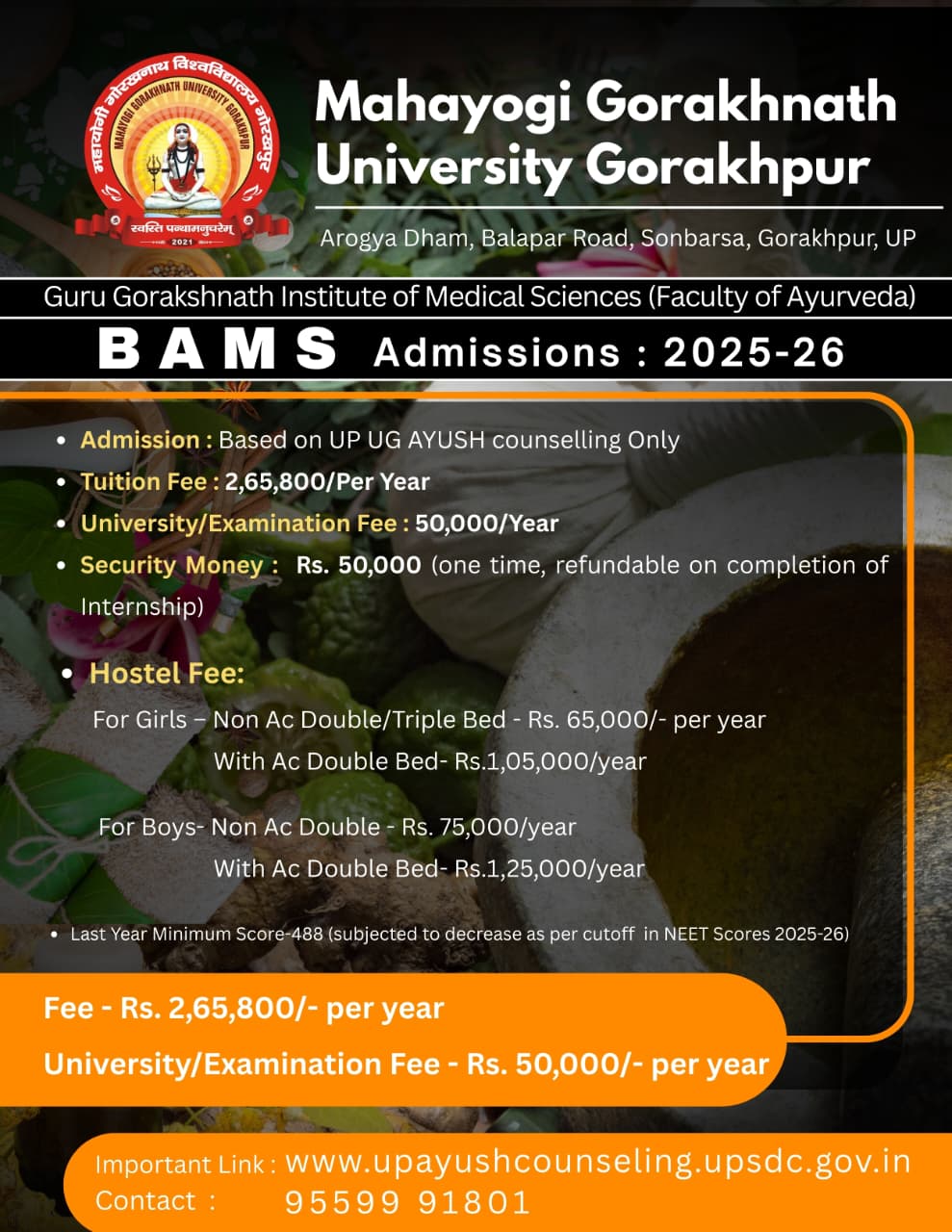What's New

Founder of MPSP

Our Inspiration

Chancellor / Founder
Ayurveda

The Guru Gorakshanath Institute of Medical Sciences established in the year 2021 with affiliation of National Commission for Indian System of Medicine (NCISM), New Delhi and have been running undergraduate programme B.A.M.S. since 2021-22 to provide to a quality and affordable medical education in Ayurvedic system of Medicine. Apart from curriculum institute teaches and promotes equitable and universal healthcare practices that encourages students to help in community health and makes services of each ayurvedic professionals accessible and affordable to all the citizens; that promotes national health goals. Every year the students are admitted through NEET counselling.
Principal's Message

Welcome to our institution, where we blend knowledge with character development to nurture future leaders. As principal, it's a privilege to lead. We're committed to fostering students' personal, academic, and social growth.
Our approach focuses on critical thinking, creativity, and a love of learning. Dedicated teachers combine innovative methods with rigorous standards, preparing students for success in today's world.
Beyond academics, we offer diverse opportunities in arts, sports, community service, and entrepreneurship to cultivate well-rounded individuals.
Together, let's tackle challenges with determination. My goal is for every student to leave with integrity, empathy, and a drive for continual growth. Join us in shaping tomorrow's leaders.
The current body of knowledge is derived from three extant texts attributed to Charaka, Sushruta,
and Vaghbata. Within the Charaka Samhita, the knowledge is ascribed to its founder, Atreya, who
mentored a cadre of accomplished pupils, including Bhela, Jatukarna, Agnivesha, Parashara, Harita, and
Ksharpani. These pupils subsequently made notable advancements in the realm of Ayurveda through
the creation of their own comprehensive treatises. Of these, Agnivesha stands out as the most eminent,
having authored the Agnivesha tantra, now recognized as the Charaka Samhita. Furthermore, Bhela and
Harita produced their individual works, namely the Bhela Samhita and Harita Samhita, further enriching
the Ayurvedic knowledge tradition.
In the Sushruta Samhita, Dhanvantari is acknowledged as the founding authority, and he passed down his wisdom to a group of disciples, which included Sushruta, Aurabhra, Aupadhenava, and Paushpakalavat.
Charaka’s School of Physicians and Sushruta’s School of Surgeons became the basis of Ayurveda and helped organize and systematically classify into branches of medicine and surgery. During the 5th century, Vaghbata compiled two compilations of texts known as Ashtanga Sangraha and Ashtanga Hridaya. These texts elaborate on the Kaya-chikitsa found in Charaka Samhita and the various surgical techniques described in Sushruta Samhita. The focus appears to lean more towards the physiological aspects of disease processes rather than the spiritual aspects. While Ashtanga Sangraha is presented in prose, Ashtanga Hridaya is composed in verse form for the purpose of recitation.
Read More..
Courses We Offer....
We care for our students, protect their welfare, and prepare them for the future
- Bachelor of Ayurveda Medicine & Surgery (BAMS)
- PhD (Rasashastra evam Bhaishajya Kalpana)
- PhD (Agadatantra evam Vyavahara Ayurveda )
- PhD (Rachana Sharir)
- PhD (Kayachikitsa)
- PhD (Roga Nidana evam Vikriti Vigyana)
- PhD (Swasthavritta)
- PhD (Kriya Sharir)
- PhD (Samhita Siddhanta)



